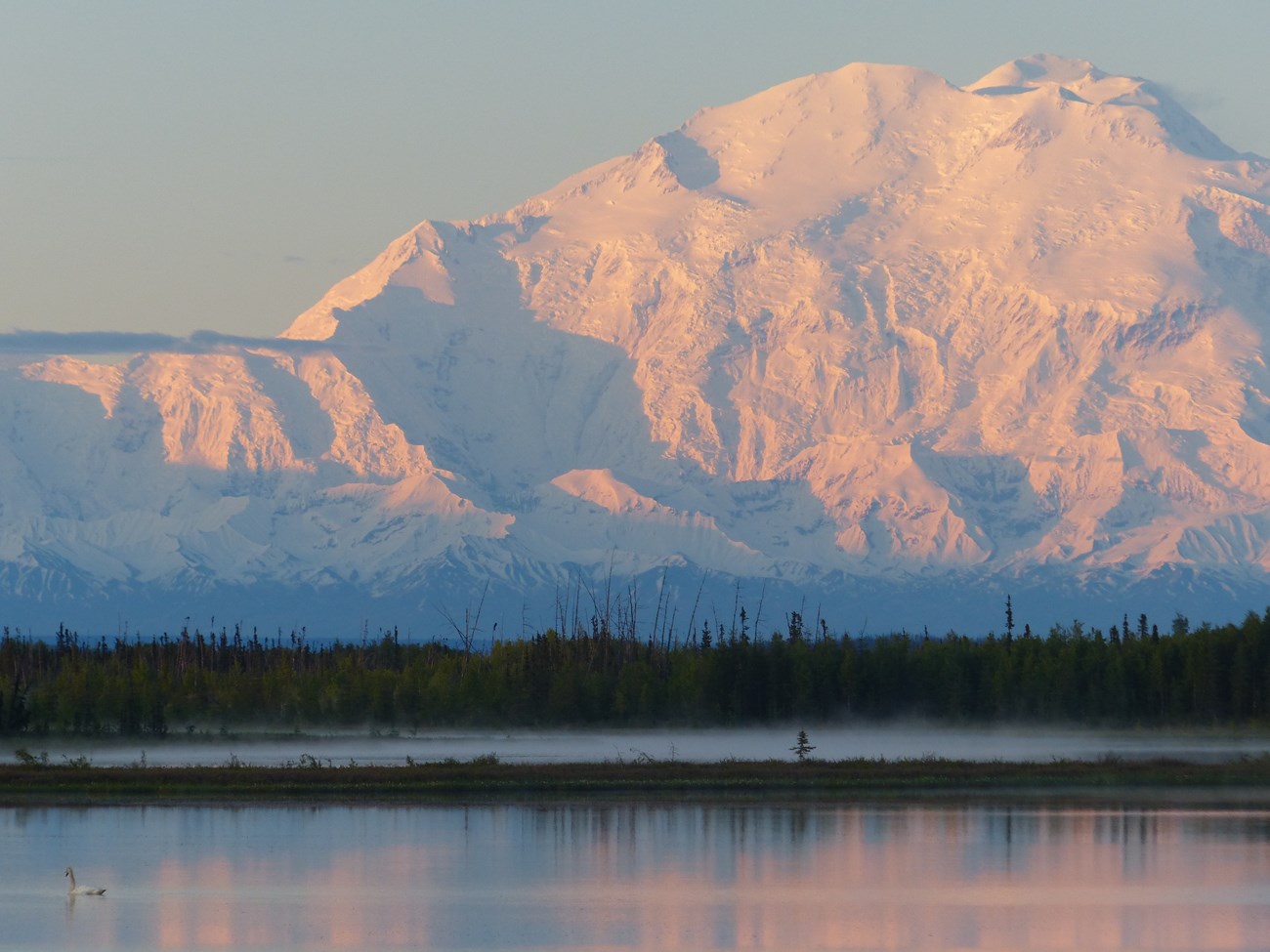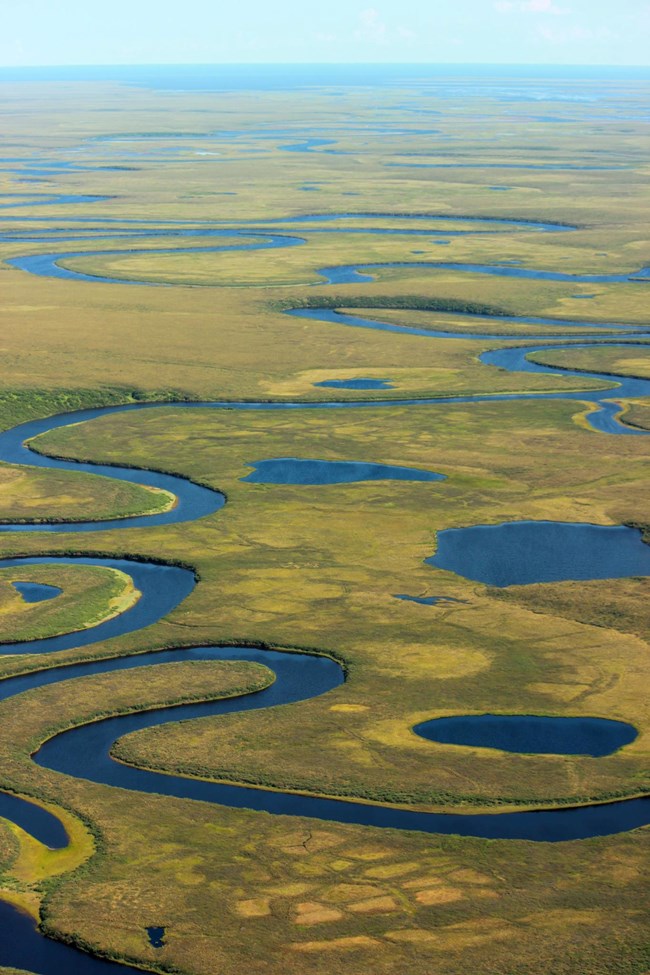Last updated: December 13, 2024
Article
Alaska’s Endangered Heritage: Climate Change and Cultural Preservation

NPS Photo
The rugged beauty of Alaska has been the homelands of Alaska Native people for thousands of generations. Today, the relentless march of climate change threatens a range of cultural resources from archeological sites to historic cemeteries. The National Park Service (NPS) is in a race to document heritage across the parklands in Alaska.
Jennifer Pederson Weinberger, cultural resources program manager for the Alaska Region, is coordinating efforts to address the impacts of climate change on these resources.
“Climate change affects every park in the region, impacting cultural landscapes, archeological sites, and more,” Pederson Weinberger said. "People have lived here for millennia and we want to make sure we document resources before significant damage or loss.”

NPS Photo
Alaska exemplifies the detrimental power of climate change in many ways. The state experiences a higher frequency and intensity of floods, wildfires, permafrost melt, erosion, and changing precipitation patterns due to climate change approximately three times faster than the global average. The NPS takes necessary and informed action to address the effects of climate change in parks through adaptation, documentation, and mitigation. That also means collaborating with and learning from the people who have had a deep connection to the land and sea around them and who hold intergenerational knowledge of that environmental change.
Efforts funded by the Inflation Reduction Act (IRA) aim to protect cultural heritage in the region by prioritizing critically threatened resources and involving community stakeholders to better understand the region’s valued places of cultural significance, so they are documented and where possible, preserved for future generations.
Tribal Collaboration and Elder Insight
Without close collaboration and partnership with Alaska Native Tribes, this work would not be possible. Through oral interviews, elders share what they’ve observed in the region and have been told through generations, providing valuable insights into how places and traditions might be changing. NPS archeologists visit culturally significant locations, recording detailed information about the places the elders have recalled, with the aim of preserving the record of these places for future generations. The records will prepare parks to respond to climate stressors by prioritizing the most severely impacted and critically threatened cultural resources. The combination of elder knowledge and on-site work will aid in developing monitoring protocols and adaptation plans. The hope is these efforts will also serve the Indigenous and local communities themselves.
"Part of the project is developing options, alternatives, and documents that Tribes can use in their own plans of action for preserving cultural resources,” Pederson Weinberger said.
Specifically, these plans will equip NPS staff and Tribal community partners with guidelines to navigate threats caused by climate change that may damage or destroy significant archeological sites or historic structures. Whether these plans detail the tools and techniques needed for preservation, strategies for emergency response, or support mechanisms for helping Tribal members cope with the loss of culturally important sites, it is crucial for Tribal partners to determine their own priorities and actions.
As Alaska Regional Archeologist, Shina Duvall is involved in several aspects of the current IRA-funded efforts, working alongside fellow cultural resource professionals and community partners across the region. Together, they bear witness to the natural beauty of the region and the destruction it suffers due to climate change. While their goals include addressing what is happening now and planning for future needs, with what they have seen firsthand, they know some loss is inevitable.
“Through the interviews, community and Indigenous leaders, elders, and knowledge bearers provide [the NPS] with guidance on how they wish to address the loss of resources. We will ask and listen to Tribal and community leaders to identify which places are important, understand how they are changing, and determine how we can assist instead of deciding for them,” Duvall said.

NPS/ Robert Winfree
The resources at risk range from historic gold mining sites, buildings such as churches, gravesites, trails, and artifacts that date back far beyond the time when Russian or Euro-American settlers arrived in the region. This project highlights the importance of collaboration and the vital role of passing knowledge about the land and the impacts of climate change to future generations. As a key component of the project, the NPS will offer employment and internship opportunities for Tribal youth, with elders providing invaluable oral histories of places and landmarks.
Witnessing History
"Most visitors are aware that Alaska is experiencing significant changes due to climate change, perhaps more so than many other parts of the world,” Duvall said. “These changes often become a topic of conversation during visits. With the project efforts, though, we hope visitors will actually see the effects of what we’re doing to protect these resources firsthand."

NPS/ Jeff Rasic
Visitors can expect to see work in action while visiting parks in numerous ways. Archeologists will be on the ground, recovering artifacts that are on the verge of being lost to erosion at some sites, while youth learn from elders and alongside cultural resource professionals while in cultural camps at other parks. Additionally, archeologists are employing less invasive technology to assess sites and monitor the impact of climate change. An example is ground penetrating radar, which is used to find and document subsurface features buried underground, helping inform future decisions regarding excavation or movement.
The project aims to establish guidelines not only for parks in Alaska but also for parks nationwide by 2029. Through collaboration with Tribal partners, the original stewards of the lands and resources across Alaska, the NPS is dedicated to ensuring that Alaska's cultural heritage is documented and where possible, preserved and protected from the threats of erosion, wildfires, melting ice, and more, safeguarding the rich cultural heritage that makes Alaska special.

Anna Petr
Anna Petr is a communications intern with the Natural Resource Stewardship and Science Directorate and is completing her master's in journalism and media communication at Colorado State University.
Tags
- aniakchak national monument & preserve
- bering land bridge national preserve
- cape krusenstern national monument
- denali national park & preserve
- gates of the arctic national park & preserve
- glacier bay national park & preserve
- katmai national park & preserve
- kenai fjords national park
- klondike gold rush national historical park
- kobuk valley national park
- lake clark national park & preserve
- noatak national preserve
- sitka national historical park
- wrangell - st elias national park & preserve
- yukon - charley rivers national preserve
- inflation reduction act
- climate change
- climate change effects
- climate change science
- alaska
- climate change management
- science and resource management
- cultural resource management
- anthropology
- cultural resources
- ecosystem restoration
- climate resilience
- bipartisan infrastructure law
- climate response
